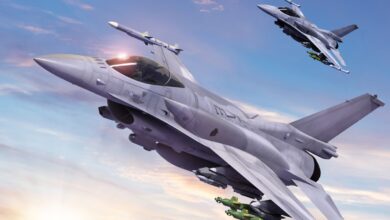Lockheed Wins USAF Long-Range Radar Replacement Competition
The US Air Force has selected Lockheed Martin’s AN/TPY-4(V)1 to replace its aging AN/TPS-75 long-range radar.
The “Tipsy 75” has been in service since 1968 as the principal USAF radar to track, detect, and report aerial targets such as aircraft and missiles.
The service selected the ground-based TPY-4 in response to the “SpeedDealer” radar demonstrations in 2020 and subsequent contract efforts in 2021 and 2022 as part of the Three-Dimensional Expeditionary Long-Range Radar (3DELRR) Rapid Prototyping program.
Selection Process
The SpeedDealer acquisition strategy allows the potential buyer to use a commercially available technology before purchasing it.
Northrop Grumman and Australian company CEA were the other two participants in the rapid prototyping program.
The service later awarded separate integration contracts to Lockheed and Northrop in 2021 “to develop test and field interfaces allowing the radar system to transmit data to other command and control nodes.”
Next-Gen Radar
“Both companies have impressive systems. After assessing radar capabilities, costs for production and sustainment, and residual technical risks to meeting the Air Force’s requirements, the AN/TPY-4(V)1 system provides the best overall value for the Air Force,” Senior materiel leader Col. Erik Rhylander said.
According to Lockheed Martin, the radar’s “fully digital, software-defined sensor architecture” allows for “more enhanced target identification and classification,” unlike the less digital previous-generation radars that have to “account for downtime for time-consuming actions, like hardware upgrades or manual data transfers.”
Lockheed Martin program director Rick Herodes said, “Our digital transmitter and receiver architecture provides flexibility to adjust performance for evolving missions, threats, and environments.”
“TPY-4 provides unprecedented flexibility through software updates without invasive or time-consuming architectural redesigns, therefore making it the most effective risk management solution for national defense.”












